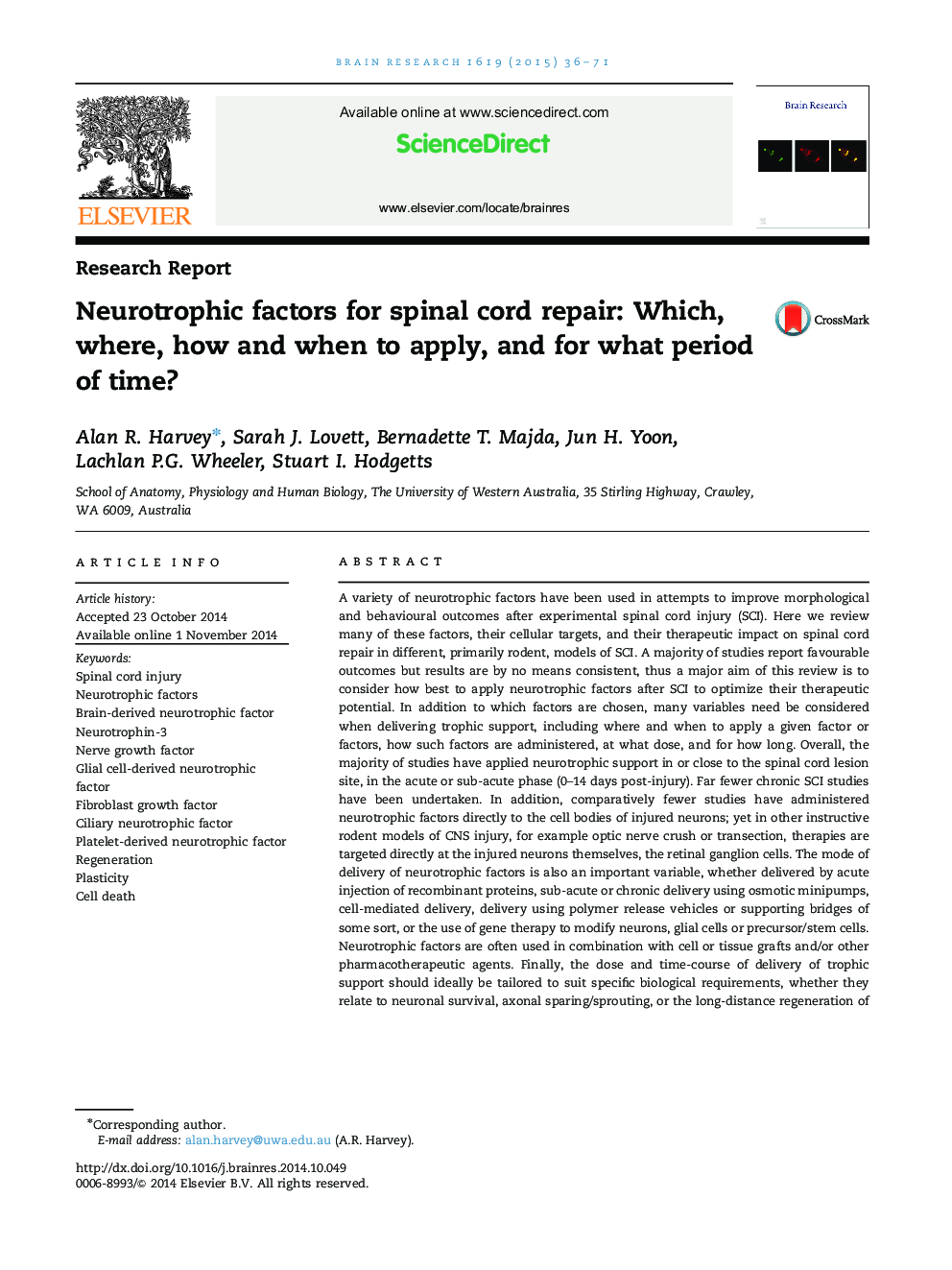| کد مقاله | کد نشریه | سال انتشار | مقاله انگلیسی | نسخه تمام متن |
|---|---|---|---|---|
| 6262990 | 1613820 | 2015 | 36 صفحه PDF | دانلود رایگان |
- Which neurotrophic factors have therapeutic potential after spinal cord injury?
- How should neurotrophic factors be applied to optimize therapeutic potential?
- Where and when to apply a given factor or factors after spinal cord injury?
- At what dose and for how long should neurotrophic factors be administered?
A variety of neurotrophic factors have been used in attempts to improve morphological and behavioural outcomes after experimental spinal cord injury (SCI). Here we review many of these factors, their cellular targets, and their therapeutic impact on spinal cord repair in different, primarily rodent, models of SCI. A majority of studies report favourable outcomes but results are by no means consistent, thus a major aim of this review is to consider how best to apply neurotrophic factors after SCI to optimize their therapeutic potential. In addition to which factors are chosen, many variables need be considered when delivering trophic support, including where and when to apply a given factor or factors, how such factors are administered, at what dose, and for how long. Overall, the majority of studies have applied neurotrophic support in or close to the spinal cord lesion site, in the acute or sub-acute phase (0-14 days post-injury). Far fewer chronic SCI studies have been undertaken. In addition, comparatively fewer studies have administered neurotrophic factors directly to the cell bodies of injured neurons; yet in other instructive rodent models of CNS injury, for example optic nerve crush or transection, therapies are targeted directly at the injured neurons themselves, the retinal ganglion cells. The mode of delivery of neurotrophic factors is also an important variable, whether delivered by acute injection of recombinant proteins, sub-acute or chronic delivery using osmotic minipumps, cell-mediated delivery, delivery using polymer release vehicles or supporting bridges of some sort, or the use of gene therapy to modify neurons, glial cells or precursor/stem cells. Neurotrophic factors are often used in combination with cell or tissue grafts and/or other pharmacotherapeutic agents. Finally, the dose and time-course of delivery of trophic support should ideally be tailored to suit specific biological requirements, whether they relate to neuronal survival, axonal sparing/sprouting, or the long-distance regeneration of axons ending in a different mode of growth associated with terminal arborization and renewed synaptogenesis.This article is part of a Special Issue entitled SI: Spinal cord injury.
Journal: Brain Research - Volume 1619, 4 September 2015, Pages 36-71
